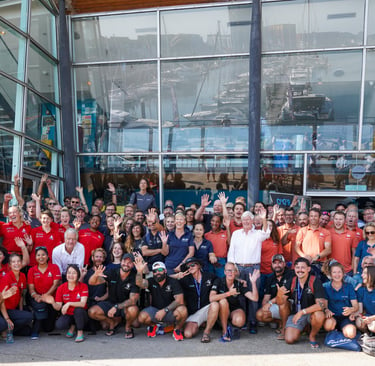The Evolution of Ocean Global Racing: From Corinthian Days to High-Tech Advancements
12/9/20232 min read


In the world of ocean global racing, the start from Southampton marks the beginning of a thrilling and competitive journey. However, the landscape of this sport has drastically changed over the years. Today, we witness huge budgets and elite professionals racing custom carbon yachts that cost upwards of €1m. These cutting-edge vessels, equipped with foils and sophisticated autopilots, seem to fly across the water, guided by technology rather than the skill of sailors. Meanwhile, shore teams, connected via satellite, make tactical decisions that shape the race.
As technology continues to advance at an unprecedented pace, the sailors of yesteryears find themselves reminiscing about the Corinthian days of the 1973 Whitbread Race. During that time, adventurous sailors took it upon themselves to assemble their own campaigns. Skippers and crew members made all the decisions, and the fleet was evenly matched. The race was a true test of human determination and skill, where budgets played a minor role and technology was minimal.
Back in those days, sailors dared to dream and pushed the boundaries of what was possible. They relied on their instincts, experience, and sheer grit to navigate the treacherous waters. It was a time when the human element played a significant part in the outcome of the race. Sailors had to rely on their own judgment, making split-second decisions that could make or break their chances of victory.
However, as the years went by, advancements in technology began to shape the sport. The introduction of carbon yachts and foils revolutionized the way these vessels sailed. The use of autopilots allowed for precise control and navigation, reducing the reliance on human input. While these developments have undoubtedly pushed the boundaries of what is possible in ocean racing, they have also left some sailors feeling disconnected from the essence of the sport.
Today, the sport of ocean global racing has become a high-stakes game, where the best technology and the most skilled professionals dominate the scene. The budgets required to compete at the highest level have skyrocketed, making it increasingly difficult for amateur sailors to participate. While many admire the technological advancements and marvel at the speed and efficiency of the modern racing yachts, there is a sense of nostalgia for the days when the human element played a more prominent role.
Nevertheless, the spirit of adventure and competition remains alive in ocean global racing. The race from Southampton is a testament to the evolution of the sport and the determination of sailors to push the boundaries. As technology continues to advance, it is crucial to strike a balance between innovation and preserving the essence of the sport. Perhaps, in the future, we will witness a return to the Corinthian days, where the human element once again takes center stage.
Subscribe to our magazine
Contacts
info@media4marine.com
CZECH Studio
PRAGUE
US Studio
NEW YORK

